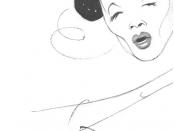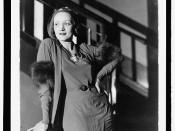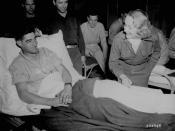"Marlene Dietrich"... the name alone makes a statement. However, every legend has a beginning. She was born Marie Magdalene Dietrich, but by the end of WW 1 Dietrichôs first name was shortened to "Marlene". Marlene Dietrich always was much more than simply a "star", more than only an actress or singer - since the beginnings of her amazing career she was an icon, a trendsetter who created style and fashion, and - most important - she lives on as a cultural symbol. A symbol of decadence during the 1930, a symbol of glamour and beauty, a symbol of anti-fascism, a symbol of survival and - a symbol of sexual freedom.
Dietrich was both gay and straight, masculine and feminine. She was nicknamed "the best dressed man in Hollywood", and her extraordinary style appealed to men and women of all sexuality's. She crossed the borders of the genders like no other star before her.
In 1928, when she already was the "toast of Berlin", she had her greatest stage success yet with a duet with Margo Lion in the revue Es liegt in der Luft (Itôs in the Air). Two years later, in her US debut film Morocco, she introduced herself to American audiences as a completely independent woman from nowhere who dresses like a man, kisses a woman and makes Gary Cooper her "girlfriend". This is the image of Dietrich everybody knows. This androgyny remained one of the most important parts of her everlasting myth.
Coming directly from Berlin, where homosexuality and bisexuality were completely accepted and respected in the 1920s, Marlene brought a charming freshness to Hollywood. Morocco was not her only gender-crossing appearance during her sensational Hollywood career. Her androgyny was accentuated in many of her films: She is seen in a very mannish leather suit...



"More than a Icon"
I need footnotes for this essay are there any on this paper. I need to know where the quotes came from
1 out of 2 people found this comment useful.